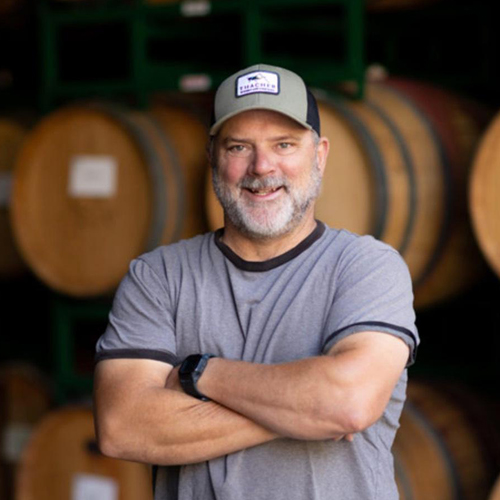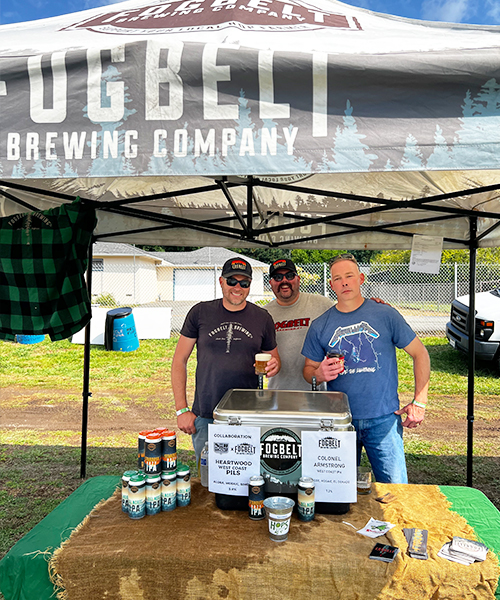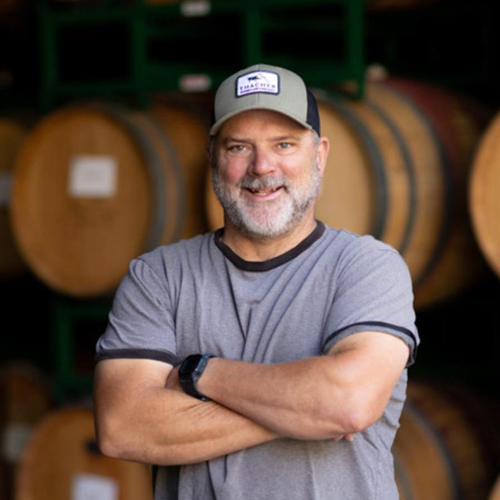
When it comes to crafting their signature cuvées, winemakers opt for different grape varieties, barrel types, and aging regimens. Yet there seems to be universal consensus with the adage “it takes a lot of beer to make good wine.”
Why do so many wine pros reach for beer after a day of tasting? “It’s a great change of pace; it’s bubbly, cold, and less acidic. It’s a perfectly refreshing palate cleanser,” explains winemaker Sherman Thacher of Thacher Winery in Paso Robles on California’s Central Coast.
Thacher doesn’t just enjoy the taste of a frosty brew; his resume includes a long tenure as a brewmaster, brewing mostly German-style beers at the Los Gatos Brewing Company from 1992–2006.
As the largest wine and craft beer producer in the United States, it’s unsurprising that California is home to artisans such as Thacher with experience in both brewing and winemaking.
Crossovers
Kent Fortner and Ryan Gibbons, co-founders of Mare Island Brewing Co., trained as winemakers and met on a crush pad in Napa. The duo brewed their first beer, Saginaw Golden Ale, in 2013; its name is a tribute to the first ship built on historic Mare Island, which in 1854 became the first U.S. naval shipyard on the West Coast and inspired the brewery’s name (the shipyard was decommissioned in 1996).

In 2014, Fortner and Gibbons opened the Ferry Taproom on the waterfront in Vallejo, Calif., and have expanded to two additional locations in northern California: the Coal Shed Brewery on the Mare Island waterfront and the First Street Taproom in downtown Benicia. Although beer is the primary focus, Fortner has not entirely abandoned the vineyard.
“I started Road 31 [Wine Co.] over 21 years ago, making one solitary Napa Valley (Carneros) Pinot Noir and selling it almost entirely from the mailing list. I always say they’ll have to pry the pruning shears from my cold, dead hands one day.”
Gibbons was the first of the Mare Island duo to transition from grapes to grains. “I sent my resume over to Lagunitas [Brewing Co.] in Petaluma looking for a lane change within fermentation and ended up getting hired as a full-time brewer, where it has been no looking back since. I still love wine, still appreciate the art and seasonality of it, but love the community and creative flexibility that being a brewer affords.” And wine has a presence in Mare Island’s taprooms: they pour Fortner’s Road 31 wines and partner with Fifth Hill wines in Sonoma, where they make their own labeled wines alongside Mare Island beers.

“I never really dreamed of being a winemaker,” says Remy Martin, co-founder of Fogbelt Brewing in Sonoma County, Calif. Although Martin’s father, the late Dennis Martin, had a 30-year tenure as a winemaker at Fetzer Vineyards, perhaps a bit of teenage rebellion was the catalyst for the younger Martin’s attraction to beer. “I grew up in wine country and before I was legally allowed to consume alcohol, the easiest adult beverage to get my hands on was wine. It was a rare treat to get my hands on even the worst beer available.”
While working at a grape harvest in New Zealand, Martin and Fogbelt co-founder Paul Hawley started homebrewing and developing recipes in their garage. Martin officially caught the beermaking bug and went on to complete the Master Brewers Program at UC Davis, which is also widely recognized as one of the world’s most prestigious viticulture and enology schools.
The source material and final product may differ, but mastering fermentation is essential to creating beer and wine. “Attention to detail is critical in brewing, and while wine is a little more resilient (lower pH, higher alcohol, and lower residual sugars), carrying over brewing habits has been invaluable,” says Thacher.
“Absolutely,” responded Fortner at Mare Island Brewing Co. when asked if his winemaking background influenced his brewing. “Ryan and I have a shared winemaking experience, and our palates, vocabulary, and knowledge sprang from that.”
Gibbons adds that wine also influences their branding. “Our winemaking lens also plays heavily in our marketing and brand aesthetics as we are focused on bringing class and elegance to the beer space. A lot of times in the beer market, we see label designs and beer names that are super colorful and cheeky and sometimes crass for a reaction … we headed in the completely different direction.”
Compare and Contrast
However, Fogbelt’s Martin believes there is less crossover than people think in the production of beer and wine. “We used to make more barrel-aged beers and there are some useful concepts about topping and anaerobic fermentation practices that have come in handy.” Martin also asserts that while vintage variation is generally desirable in wine, beer producers and drinkers have different expectations.
“Wine is celebrated when the crop year, or vintage, is conducive to making wine,” he said. “Beer is celebrated when it is made the same consistently and consumers know what to expect. Brewers are constantly producing beer, so there is not really a ‘slow’ time of year for us.” And while Martin occasionally has “a little snifter of Bourbon” or a glass of red wine, beer is a constant. “I drink a Fogbelt beer every day.”
In the Golden State, craft beer and wine are both power players, but a refreshing beer at the end of the day seems to be a popular thirst-quencher whether your line of work is fermenting grapes or grains. “The end of the day calls for a beer, for sure, whether I’ve been making beer or wine that day,” declares Fortner. And beer’s generally lower alcohol content, compared to wine, can also be a deciding factor.
“I’m at the point in my life and career where I like to enjoy a beer for its refreshing properties and not necessarily for the alcoholic effects,” says Gibbons.
And although winemaker Thacher’s brewing days are behind him, beer is still a big part of his life. “Luckily, I still have great connections in the brewing industry, and the beer hasn’t stopped flowing.”
The post It Takes a Lot of Beer to Make Good Wine appeared first on CraftBeer.com.
